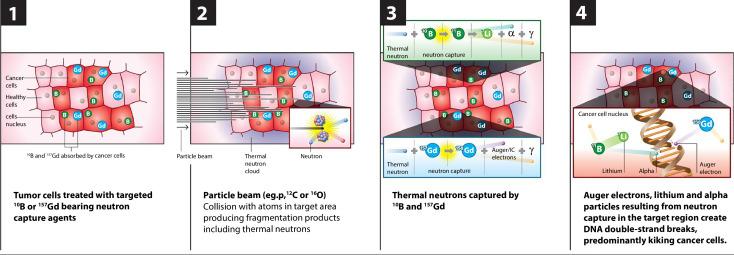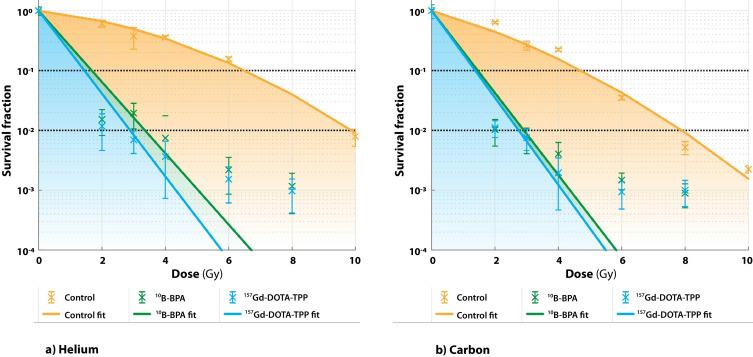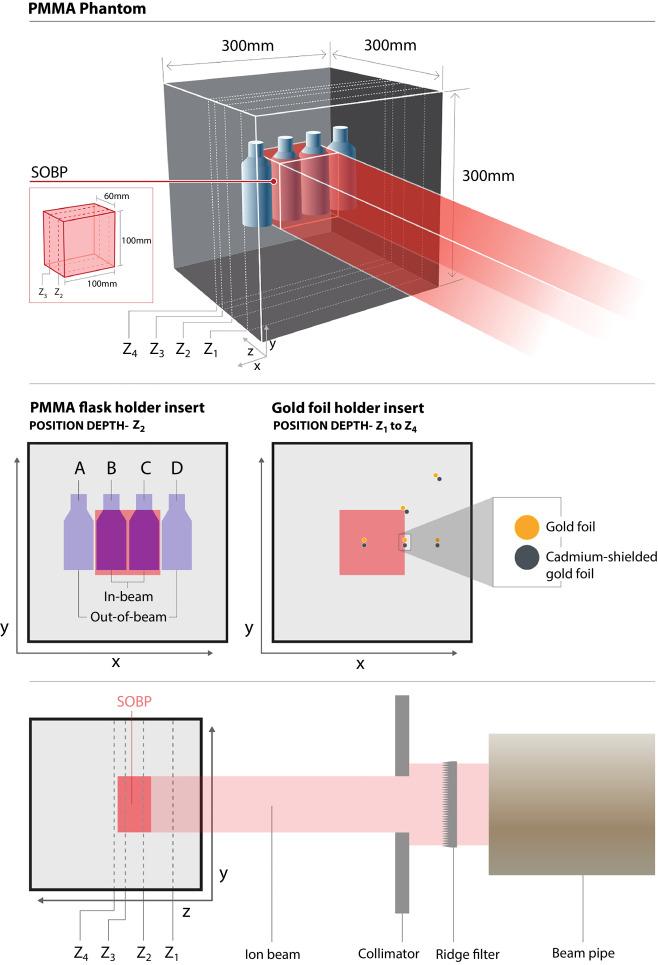Key Points
Research demonstrated that internally generated neutrons could be used to effectively target micro-infiltrates and cancer cells outside of the defined treatment regions
Cells treated with neutron capture agents showed significantly reduced survival and delayed growth when irradiated with carbon and helium ion beams, compared to cells not treated with the agents
ANSTO human health researchers collaborated with Australian and Japanese institutions on the advancement
ANSTO researchers have made significant progress on a groundbreaking new approach to cancer treatment Neutron Capture Enhanced Particle Therapy (NCEPT), which has the potential to improve outcomes for patients with deeply situated, diffuse tumours.
The results of their pioneering study published in the prestigious International Journal of Radiation Oncology, Biology, Physics (Red Journal) demonstrated that the addition of neutron capture agentsto cancer cells during carbon and helium ion beam irradiation resulted in a three to five times greater reduction in cancer cell survival and delayed growth cell survival and growth in-vitro, compared to ion radiation alone.

The study, led by a team of researchers at ANSTO with collaborators from University of Wollongong, University of Sydney and the National Institutes for Quantum Sciences and Technology (Japan) confirmed that internally generated neutrons could be used to effectively target micro-infiltrates and cancer cells outside of the defined treatment regions.
"Our results show the potential for NCEPT to provide an increased dose to tumour tissue within the treatment volume while reducing radiation doses to off-target tissue," said Assoc. Prof. Mitra Safavi-Naeini, project lead and corresponding author of the study. "This could lead to better outcomes for patients with challenging cancers, such as brain tumours, that are difficult to treat with conventional therapies."
This innovative approach could have a significant impact on the treatment of a wide range of cancers, improving outcomes and quality of life for patients worldwide.
The international collaboration between ANSTO and Japan's National Institute for Quantum Science and Technology (QST) is crucial in the development of NCEPT. Leveraging the expertise and resources of multiple domestic and international institutions contributed to the recent advancement.
The researchers used two different neutron capture agents, [10B]-BPA and [157Gd]-DOTA-TPP, in their experiments with human glioblastoma cells. They found that cells treated with these agents showed significantly reduced survival and delayed growth when irradiated with carbon and helium ion beams, compared to cells not treated with the agents.

The study also highlighted the potential for NCEPT to be applied to a wider range of deeply situated and diffuse tumours, by targeting radiation dose to micro-infiltrates and cells outside of defined treatment regions.
"We believe that NCEPT represents a new paradigm in charged particle therapy," said Nicholas Howell, the study's first author.
"By combining the spatial and temporal precision of charged particle therapy with the biochemical targeting of neutron capture therapy, we can achieve a remarkably high specificity of energy deposition within cancer cells and tissues."
"This could lead to improved outcomes for patients with cancers that are currently difficult to treat effectively."
The development of NCEPT represents a significant step forward in addressing the constant need for innovative and disruptive technologies to improve long term survival and the quality of life for cancer patients.
The team is now planning further research to evaluate the efficacy of NCEPT in vivo and to explore its potential for clinical translation.

At the present time, particle therapy is not available in Australia but the Australian Bragg Centre for Proton Therapy and Research (the Bragg Centre) in Adelaide is under construction and expected to commence operations in 2024-25. The Queensland Government is funding the establishment of a new Cancer Centre in Brisbane to deliver proton therapy.
Australian patients can apply for proton therapy funding through the Federal Government's Medical Treatment Overseas Program.
Earlier this year, the group published the first experimental demonstration of real-time neutron capture discrimination in helium and carbon ion therapy in a paper in Scientific Reports.
There are two patents associated with the approach.
ANSTO Health Research and Technology Group is at the forefront of cancer research, dedicated to developing new and innovative approaches to cancer treatment. The group's state-of-the-art facilities and world-leading experts are committed to advancing the field of cancer care and improving outcomes for patients.
This work was partly funded by a Yamagiwa-Yoshida Memorial International Cancer grant.






